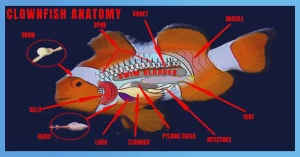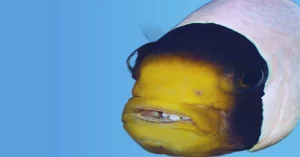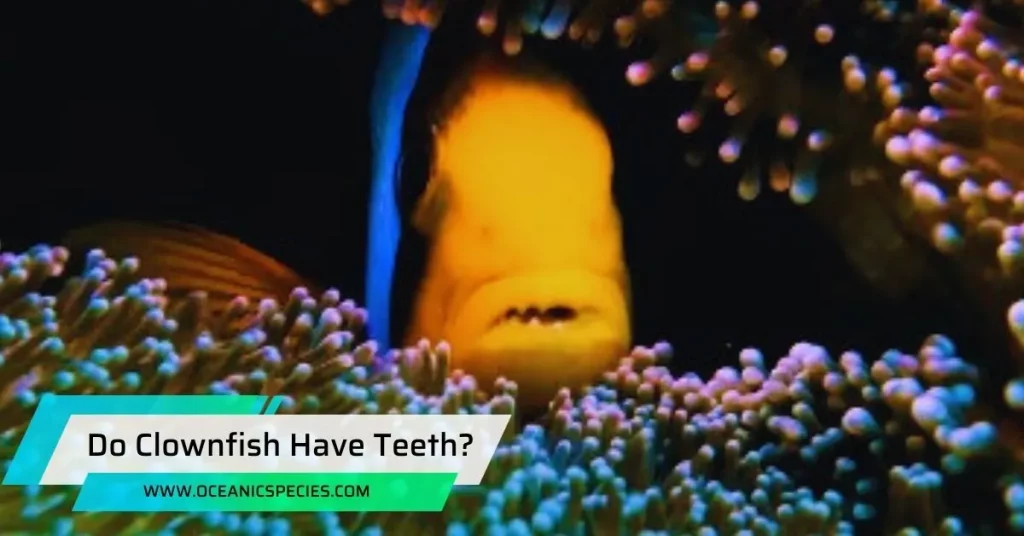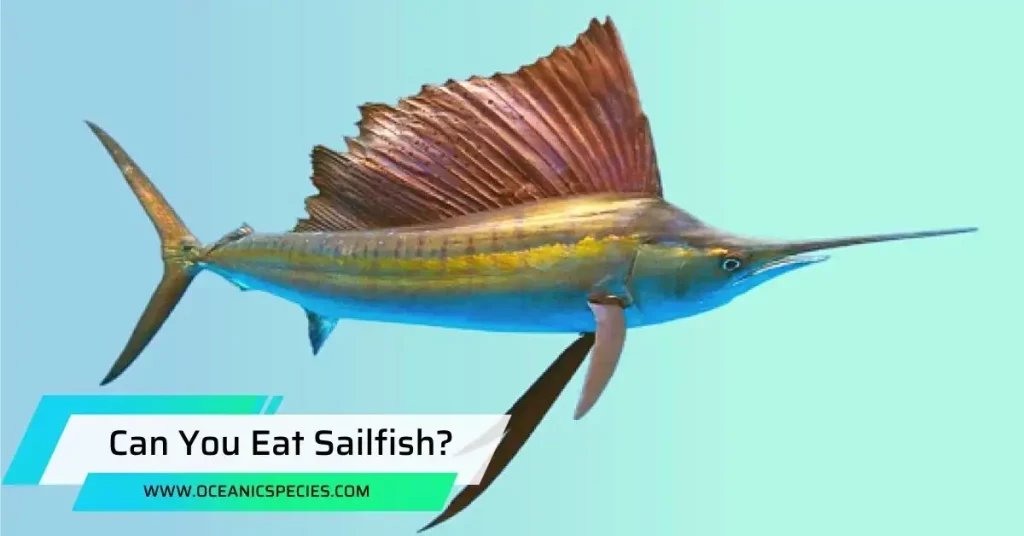Clownfish have pharyngeal teeth, which are located in the pharyngeal arch of their throat. These teeth are used for chewing and grinding food.
Additionally, clownfish can bite humans if they are provoked, so it is recommended to use protective gloves when handling them.
Understanding Clownfish Anatomy
Clownfish possess pharyngeal teeth, which are located in the arches of their throats. These teeth enable them to consume their prey and play a role in their overall anatomy.

The Anatomy Of A Clownfish
Clownfish, also known as anemonefish, are small and colorful marine fish that are famous for their association with sea anemones. These fascinating creatures have distinct anatomy that allows them to thrive in their oceanic environment.
Clownfish have several key features that contribute to their unique anatomy:
- Colorful exterior: One of the most striking features of clownfish is their vibrant colors, which can range from shades of orange, yellow, and white to black and blue. This coloration serves as a form of camouflage, helping them blend in with the sea anemones they reside in.
- Elongated body: Clownfish typically have an elongated body shape, which is streamlined and helps them navigate through coral reefs and other underwater structures.
- Unique fin structure: They possess an array of fins that aid in their movement and stability in the water. These include the dorsal fin on their back, the pectoral fins on their sides, and the anal fin on their belly.
- Mucus layer: Clownfish have a slimy mucus layer covering their bodies, which provides protection against infections and parasites in their environment.
- Scaleless skin: Unlike many other fish species, clownfish have scaleless skin. Instead, they have a thick and leathery skin that helps shield them from potential predators.
- Amphiprioninae family: Clownfish belong to the family Amphiprioninae, which includes various species with slight variations in their anatomy and coloration.
Key Features Of A Clownfish’S Mouth
Now let’s focus on one specific aspect of clownfish anatomy: their mouth. The mouth of a clownfish is an essential part of its overall anatomy, facilitating various functions vital for their survival and well-being. Here are some key features of a clownfish’s mouth:
- Small yet powerful jaws: Clownfish have small jaws relative to their body size, but their jaws are remarkably strong. With these powerful jaws, they are capable of biting and consuming a variety of small organisms, including crustaceans and tiny fish.
- Pharyngeal teeth: Clownfish possess what is known as pharyngeal teeth. These teeth are located in the pharyngeal arch of their throat. Although small in size, these teeth allow them to grip and chew food effectively.
- Serrated edges: The teeth of clownfish have serrated edges, which aid in breaking down their prey into smaller, more manageable pieces. This adaptation helps them consume and digest their food more efficiently.
- Hinged mouth: Another interesting feature of a clownfish’s mouth is its hinged structure. This allows them to open their mouths widely to catch prey or clean their surrounding environment, particularly when they interact with their host anemone.
- Cleaning symbiosis: Clownfish engage in a fascinating mutualistic relationship with sea anemones, providing them with protection from predators while benefiting from the anemones’ cleaning activities. The clownfish use their mouths to gently nibble and clean the anemone’s tentacles, removing parasites and debris.
- Communication: Clownfish can also produce sounds using their mouths, which they use for communication purposes. These sounds range from pops, chirps, and even clicks, and they play a role in establishing territory, defending their anemone home, and interactions with other clownfish.
Exploring Clownfish Teeth
Clownfish have pharyngeal teeth in the arch of their throat, which helps them in feeding and survival. They do not have external teeth and are not known for biting humans.
Let’s delve into the world of clownfish teeth to uncover the fascinating details.
Do Clownfish Have Teeth?
Yes, clownfish do have teeth, although not in the traditional sense that humans do. Their teeth are located in their throats and are called pharyngeal teeth.

These specialized teeth are found in the pharyngeal arch of their throats, enabling them to chew and consume their food effectively.
Types Of Teeth Found In Clownfish
Clownfish have two main types of teeth:
- Incisiform teeth: These teeth are sharp and pointed, similar to incisors. They are present in the front part of the throat and help with grasping and tearing food.
- Molariform teeth: These teeth are broader and flatter, resembling molars. They are located towards the back of the throat and assist in grinding and crushing the food.
The Structure And Function Of Clownfish Teeth
- Incisiform teeth:
- Shape: Sharp and pointed.
- Function: Grasping and tearing food.
- Example: Used for breaking down smaller prey, such as small crustaceans or plankton.
- Molariform teeth:
- Shape: Broader and flatter.
- Function: Grinding and crushing food.
- Example: Used for breaking down larger prey, such as small fish or shrimp.
The Role Of Teeth In Clownfish Behavior
Clownfish have teeth known as pharyngeal teeth, which are located in the pharyngeal arch of their throat. They use their jaws to produce warning sounds before attacking.
The Importance Of Teeth In Clownfish Survival:
Clownfish use their teeth for various survival purposes, ensuring their well-being in the wild. Teeth play a significant role in their feeding habits, allowing them to consume their preferred diet. Dental structures aid in the digestion process, ensuring the extraction of nutrients from their food. Proper dental health is crucial for overall health and longevity in clownfish.
How Clownfish Use Their Teeth In The Wild:
Clownfish rely on their teeth to tear apart food items like small crustaceans, algae, and plankton. Teeth help them catch and consume prey, contributing to their energy and nutritional needs.
Their strong dental structures also assist in defending their territory from potential threats and predators. Teeth aid in the manipulation of objects and building coral nests, providing shelter for clownfish communities.
Interactions With Other Fish Species Based On Teeth Presence:
Teeth presence in clownfish plays a role in their interactions with other fish species. Their dental structures can act as defensive mechanisms against predatory fish, deterring attacks. Some fish species may avoid interacting with clownfish due to the potential risk of being bitten. Teeth also influence social hierarchies within clownfish communities, establishing dominance and resolving conflicts.
Do Clownfish Bite Humans?
Clownfish do have teeth, specifically known as pharyngeal teeth, which are located in the arch of their throat. While they are not typically aggressive towards humans, they may bite if provoked, so it’s recommended to use gloves when handling them.
Can Clownfish Bite Humans?
Clownfish may seem harmless with their vibrant colors and playful nature, but can they actually bite humans? The answer is yes, clownfish can bite humans under certain circumstances. Here’s what you need to know:
- Provocation: Clownfish are generally docile creatures, but they can become aggressive if they feel threatened or provoked. If you put your hands into their tank for cleaning or feeding purposes, they may perceive it as a threat and attempt to defend their territory by biting.
- Protection of eggs: Clownfish are known to fiercely protect their eggs. If you accidentally come too close to their nesting site, they may perceive you as a potential threat to their offspring and nip at you as a warning.
- Self-defense: In some cases, clownfish may bite humans as a form of self-defense. If they are cornered or feel trapped, they may resort to biting as a means to escape or protect themselves.
Reasons Why Clownfish Might Bite Humans:
- Feeling threatened or provoked
- Protecting their eggs
- Self-defense
Tips For Protecting Yourself From Clownfish Bites:
- Use thick gloves: If you need to clean or feed the clownfish tank, wearing gloves can help protect your hands from potential bites.
- Avoid sudden movements: Clownfish are more likely to bite if you make sudden, threatening movements. Move slowly and calmly when interacting with them to avoid triggering their defensive behavior.
- Give them space: Respect the clownfish’s territory and avoid getting too close to their nesting site or hiding spots. Giving them enough space can minimize the chances of them feeling threatened and resorting to biting.
- Gradual acclimation: If you are introducing new clownfish to an existing tank, it’s important to acclimate them slowly to minimize stress. Sudden introductions can lead to aggression and potential biting.
Frequently Asked Questions
Can Clownfish Bite You?
Yes, clownfish can bite if provoked, especially if you put your hands in their tank.
What Type Of Teeth Do Clownfish Have?
Clownfish have pharyngeal teeth that are located in the arch of their throat.
Do Clownfish Have Jaws?
Yes, clownfish have jaws and they use them to clack together and produce warning sounds.
Do Clown Fish Change Gender?
Clownfish do not change gender. They have pharyngeal teeth and can clack their jaws together.
Can Clownfish Bite Humans?
Clownfish can and will bite humans if they are provoked. If you want to protect your hands from being bitten, you should use some relatively thick gloves.
Conclusion
Clownfish do have teeth, known as pharyngeal teeth, which are located in the pharyngeal arch of their throat. These teeth help them in grinding their food and aid in digestion. While clownfish are not typically aggressive, they can bite humans if they feel threatened or provoked.
It is important to handle them with care, especially when cleaning or feeding their tank. To protect your hands from potential bites, it is recommended to use thick gloves. Additionally, high-speed video imaging and X-ray technology have revealed that clownfish can also clack their jaws together to produce warning sounds before attacking.
This behavior serves as a defense mechanism and a way to communicate with other clownfish in their social groups. Understanding the dental and behavioral characteristics of clownfish adds to our appreciation of these fascinating marine creatures.





